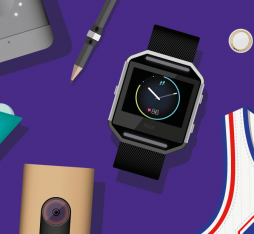Since that time, this transmission technology has gone from strength to strength. Whether you watch digital terrestrial TV or surf the web at home using WiFi, or out and about using 4G mobile broadband, OFDM underpins it all. Today it’s mainstream and invisible to most users, but it was, and remains, the origin of a slew of revolutions in our daily lives. Télécom Bretagne engineer Bernard Le Floch is well-placed to talk about the adoption and diffusion of this technology, having spent the lion’s share of his career at Orange’s Research arm and contributed to Digital radio and TV standardisation programmes.
Eureka! A foundation project for OFDM
Shortly after joining the government department of what was then known as the Direction Générale des Télécommunications (DGT) in 1985, Bernard Le Floch was called on to look into OFDM. “At that time, not a lot was known about OFDM, until the research work carried out by DGT and Télédiffusion De France (TDF – France’s national transmission services operator) at their joint research arm, the Centre Commun d’Etudes de Télévision et Télécommunications (CCETT).” At that time, the CCETT (a joint venture between TDF and CNET, the Centre National d’études des Télécommunications – the future Orange Labs) was playing a central role in the European Union’s Eureka-147 programme to develop a Digital Audio Broadcasting standard – better known today as DAB. It was a tremendous human adventure, punctuated by moments of sheer bravura, especially when he was involved in promoting OFDM technology for the transmission layer of the DAB standard.
As Bernard tells it, “The best way of achieving the full potential of OFDM was to demonstrate it in a real-life environment. In the space of a twelvemonth, we developed a prototype OFDM transceiver and we went to the World Radiocommunication Conference organised by the International Telecommunication Union (ITU) in Geneva in 1988. We invited ITU delegates from all over the world to go for a spin in a Renault Espace to demonstrate the system. And it was a great success that had a decisive impact on attendees!” OFDM had demonstrated its effectiveness and after that, there was no holding it back. In July 1990, it was decided to select OFDM for the digital radio standards. Shortly thereafter, a team from the CCETT got another chance to go before the movers and shakers of the media industry when they attended the annual convention of the National Association of Broadcasters (NAB) in Las Vegas, where they gave a demonstration similar to the one given in Geneva.
The digital radio standardisation phase then kicked in, resulting in the DAB standard: “Standardization is just one stage – an important stage, of course – among other, equally difficult, stages because you had to convince manufacturers and operators of the benefits of a new, 100 per cent digital system. In this connection, hats off to the determination of everyone who contributed to those projects, to their enthusiasm and profound interest in the topic, enlivened with the prospect of success.”
TNT takes off with OFDM
In 1992, as the DAB standardisation group was set up under the aegis of the CCETT, the TV sector was in turn wanting to dispense with the old analogue standards, whose names – PAL and SECAM – are still familiar to many. That same year, the digital Terrestrial Television broadcasting (dTTb) project was set up, jointly run by the CCETT and Philips. Once again, the CCETT campaigned for the adoption of OFDM and the technology was chosen in 1995 by the partners in the Digital Video Broadcasting (DVB) project that included all the European industrial players concerned in the future digital TV service. “Like the previous project, this one was characterised by the harmony reigning in the in-house team, and by the diversity of the links with the outside world. We were in touch with a large number of experts from all the European partner countries in the standardisation programme, and those meetings are remembered as unrivalled times of mutual exchange and enrichment….”
Based on OFDM, the DVB-Terrestrial (DVB-T) standard was published in 1996, leading to the development of Télévision Numérique Terrestre (TNT) in France, which was finally launched in 2005. For TV viewers that meant more channels, high-definition, digital-quality sound and images, and improved reception – a hands-down win over the old analogue standards!
Targeting the networks
As Bernard Le Floch points out, “CCETT’s research was taking place as much in a Broadcasting arm as in one devoted to Telecommunications. As a result, we were involved, as part of the European Telecommunications Standards Institute (ETSI) in the field of wireless local area networks – what today we call Wi-Fi – as a member of the Broadband Radio Access Networks (BRAN) working party. Once again, we made a convincing defence of OFDM technology using slightly different parameters, which was to find its way into the final version of the WiFi standard currently used in our smartphones, tablets and computers!” Looking ahead, it also went on to be used in a derivative version in 4G mobile telephony networks, and is being considered for the future 5G standard.
That’s a vast field of applications for a transmission technology that, at the end of the day, has created multiple revolutions in our communications and in our entertainment and information channels.






